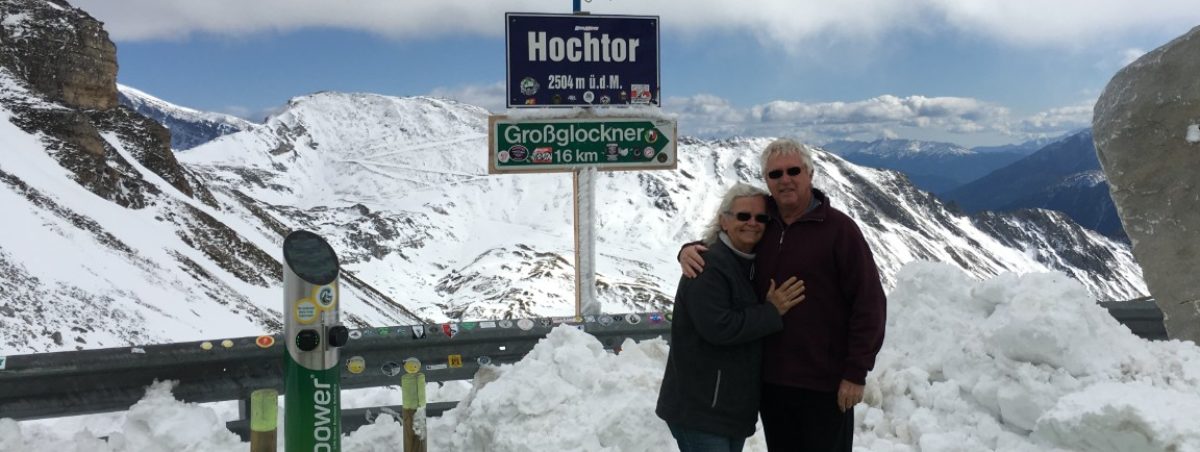Fridge/Freezer Management in a Motorhome:
Without doubt, if you have a choice, the better option is definitely a 2 door fridge/freezer rather than a single door fridge/freezer.
Upright 3 way fridge/freezers may not run all that efficiently in warmer weather so careful planning is required to get the most out of the fridge/freezer.
Before costly upgrades and or switching to compressor fridge/freezers is contemplated it may be worthwhile organising your current fridge/freezer as best as possible.
We have a 2 door fridge/freezer in our Hymer motorhome in Europe, however, the following is what we have found worked for us with a single door 3 way fridge/freezer in our off road caravan in Australia:-
On an extended trip we cryovac our chicken, seafood, meat and bacon and freeze them before we go and arrange in servings of 2/packet so they fit nicely into the freezer.
Bring the fridge/freezer down nice and cold for a day or so before you start loading food into it.
If done properly we can fit many packets into the freezer and we then put the frozen bacon on the shelf immediately below the freezer, then the dairy products on the shelf below that, working down to fruit and vegetables on the bottom shelf.
The idea is to open the fridge/freezer as seldom as possible and to keep the fridge/freezer as full as possible – it is the warm air from outside the fridge/freezer that is the enemy – when you open the fridge/freezer door the cold air gets dumped on the floor of the motorhome and the warm outside air goes in – the fridge inside air temp can easily go up between 4 and 8 degrees on just 1 opening.
Buy a wireless thermometer system with multiple sender units (one for fridge and 1 for freezer) with a remote readout so you can keeps tabs on your fridge and freezer temps – Engel, Evakool and Waeco make them and they sell for around $30-$50 AUD.
Alternatively, we purchased a “weather station” from Jaycar Electronics which can accommodate up to 8 sender units and a remote digital readout which works well for us.
As you use up fridge contents it is important to put something back in to replace what you have taken out, to prevent warm air being able to rush in when opened.
Have a few items on hand such as small drink bottles or Tupperware containers filled with water which you can put in the vacant spaces in the fridge and freezer – another suitable item for this is varying shapes and sizes of isolite material ( the white packing used for appliance transportation) – it can be purchased in thin slabs which you can cut to your own requirements.
Upright fridge door seals degrade over time and the fridge then won’t run efficiently and it is probably wise to replace the seals every 3-4 years – they are available from somewhere like Clark Rubber or online from https://www.doorseal.com.au/ (no experience with these sites).
Fridge fans – putting 12 volt, low current draw fans inside the venting space grills works well – one at the bottom to draw cool air in and one at the top to expel hot air out (turn one round so one sucks air and the other blows air)– simply wire them in to your 12 volt leads going to the fridge and include either a small rotary on/off switch or incorporate a thermostat into the wiring circuit – fans from computer cases work well for this option. The fans can be attached to the grills using cable ties.
If you don’t want to put fans in the venting space try to fit a shade over the vent grills to keep the sun off the back of the fridge/freezer and or remove the vents completely when stationary.
There are usually different types of 3 way fridge/freezers available – your fridge class should be stamped on the plate inside the fridge – the classes are N (Normal) for up to around 32 deg C, ST (Sub Tropical) for up to around 36 deg C and T (Tropical) rated to around 43 deg C. – the T is the class recommended for Northern Australia
If you want to install a compressor fridge, which is what we eventually did with our Australian off road caravan you may need somewhere in the vicinity of 200 watts of solar panels and 200 AH of leisure battery capacity.
A good DC to DC solar regulator/charger such as a Redarc BCDC1240 40amp DC-DC battery charger will boost the output from the solar panels and have your leisure batteries charged in no time at all.
